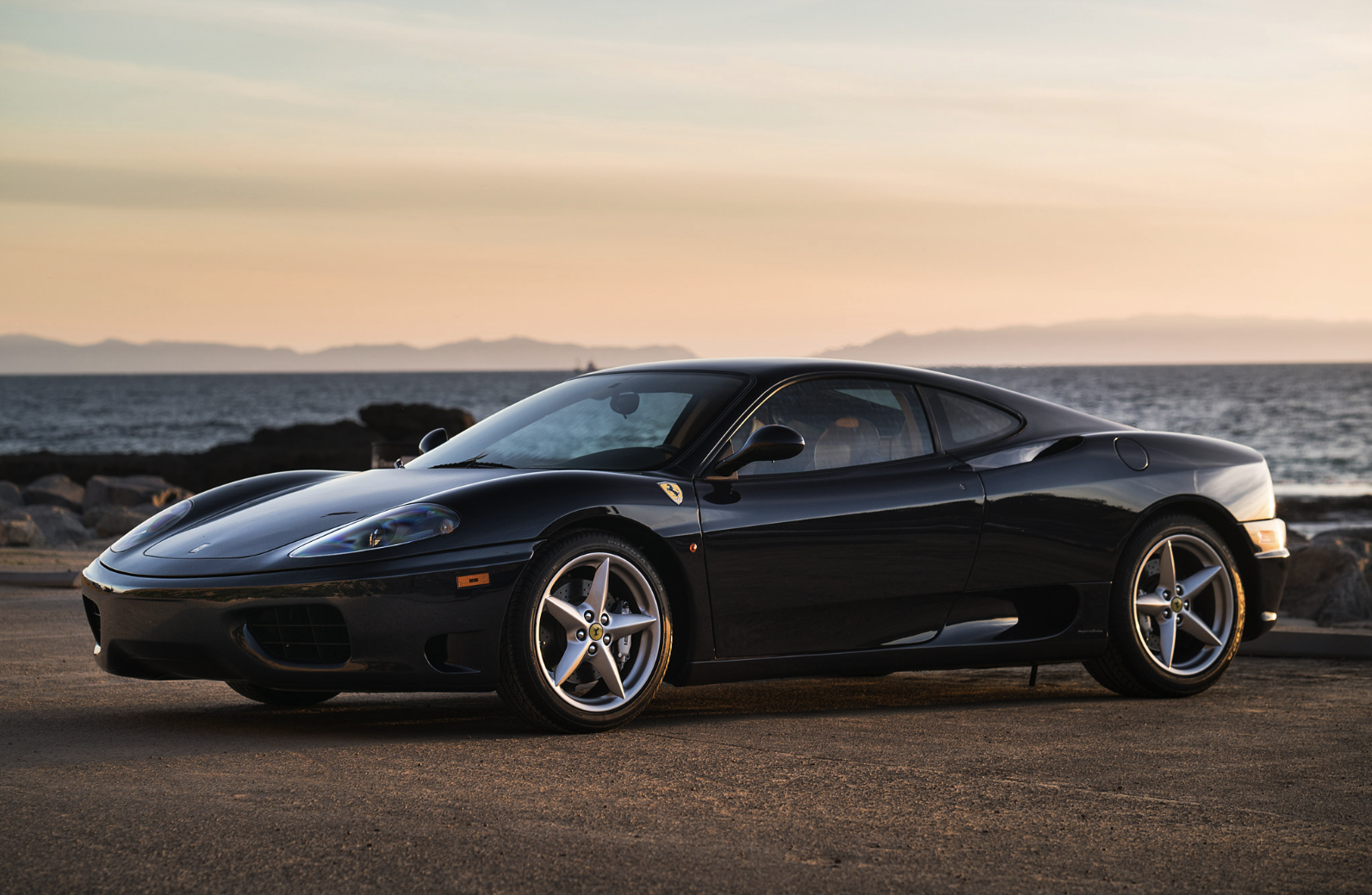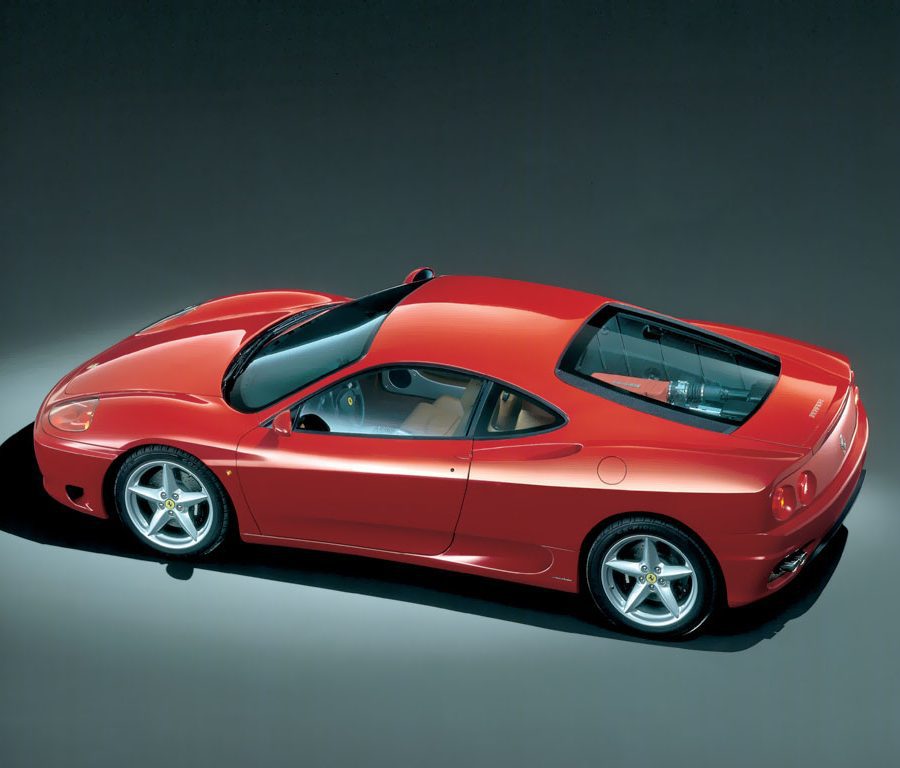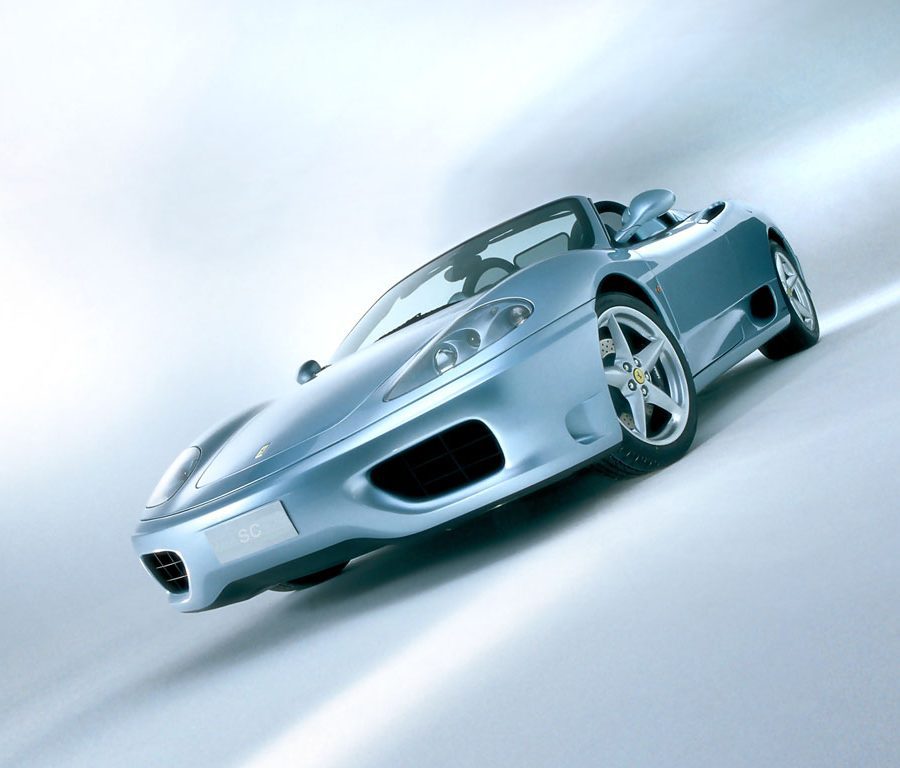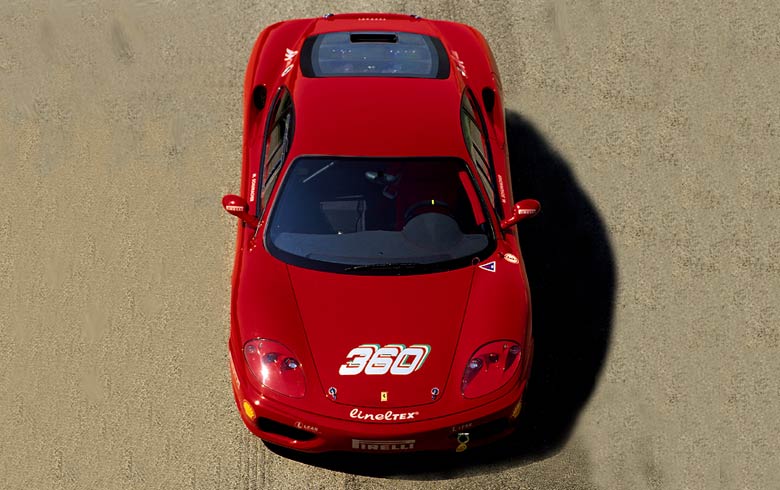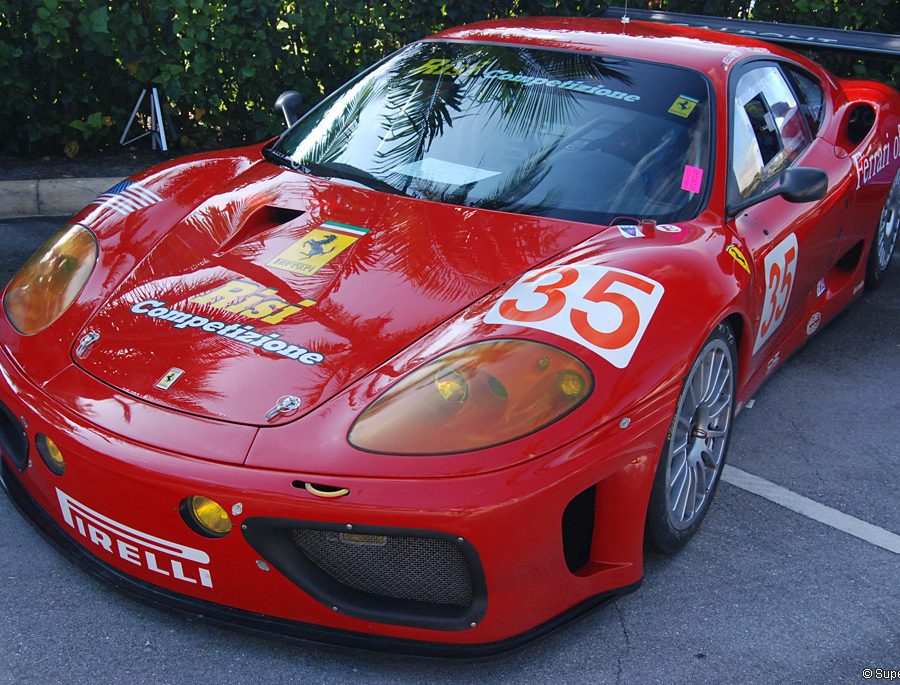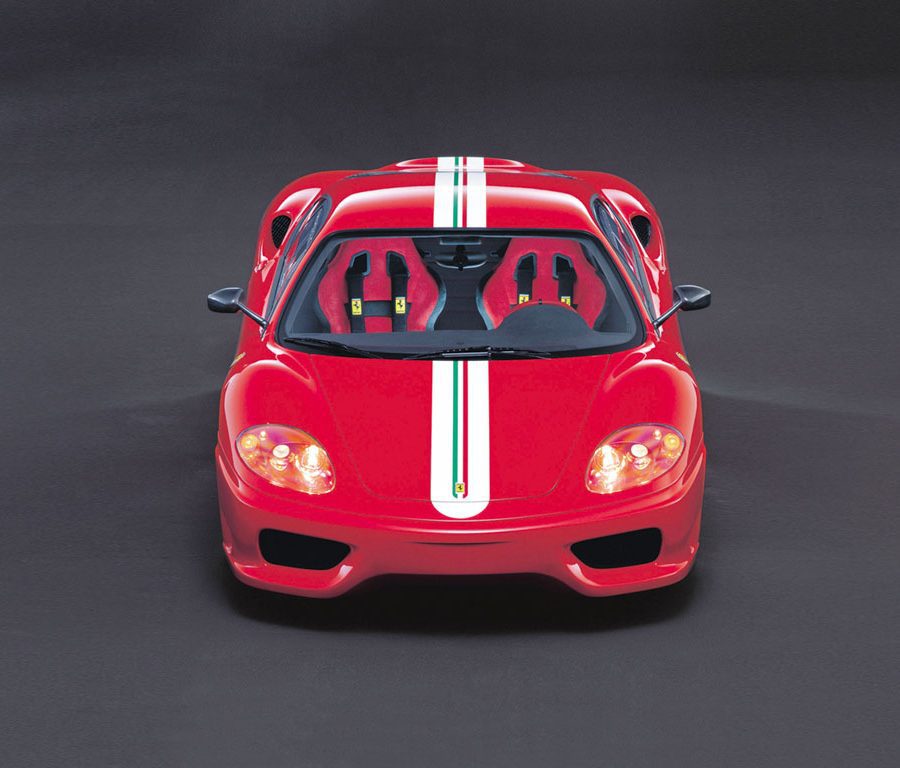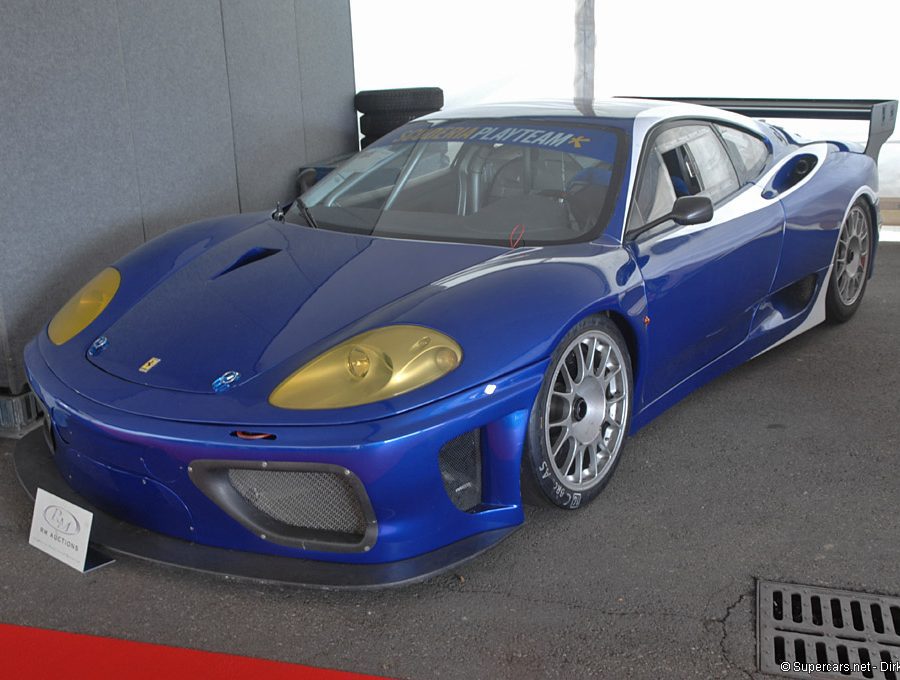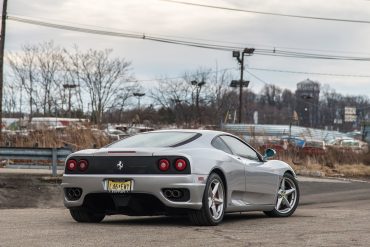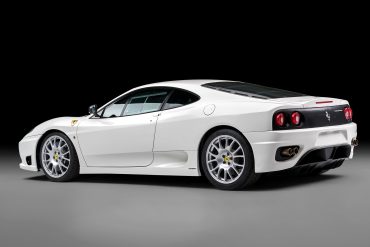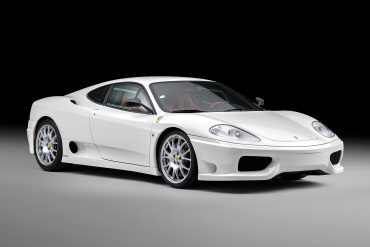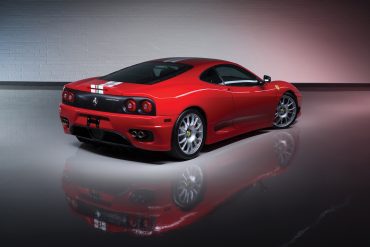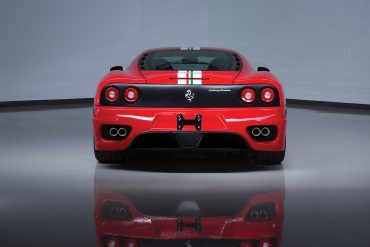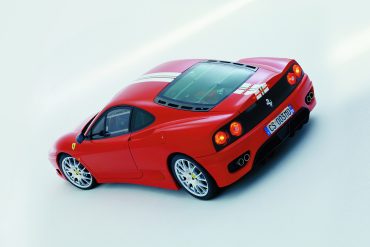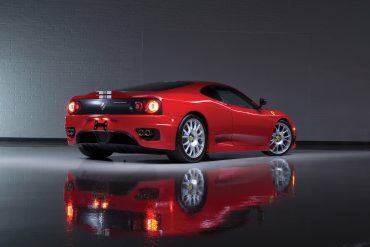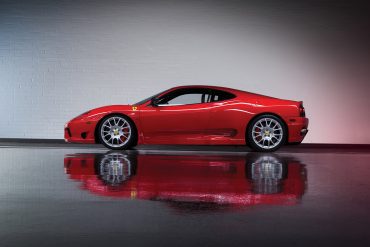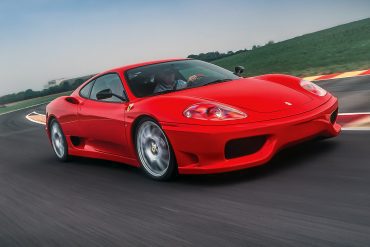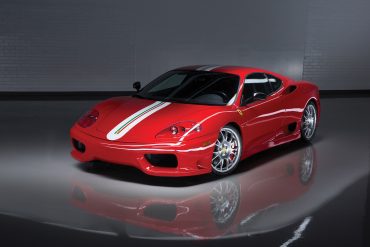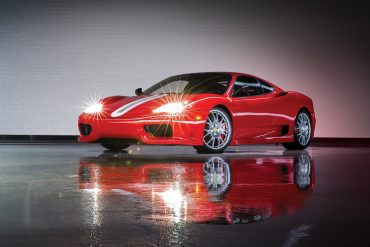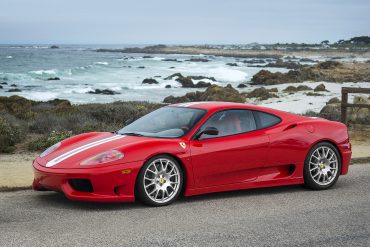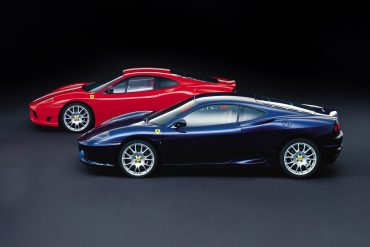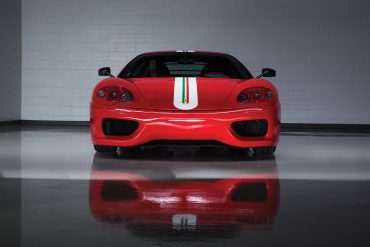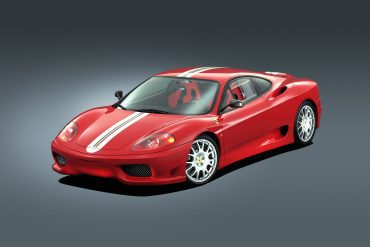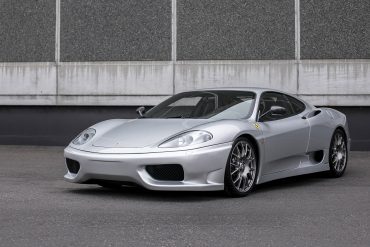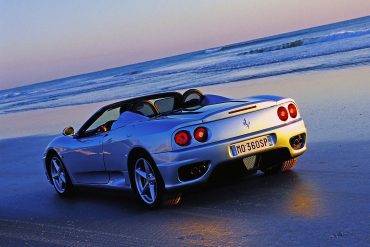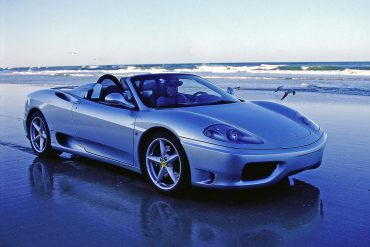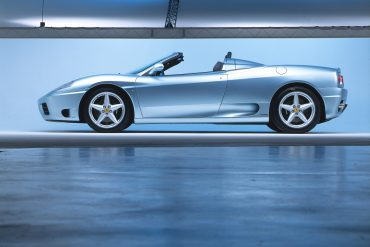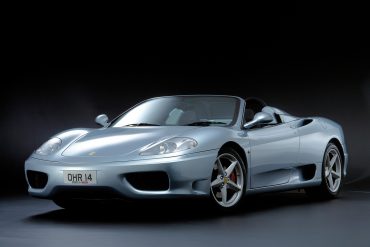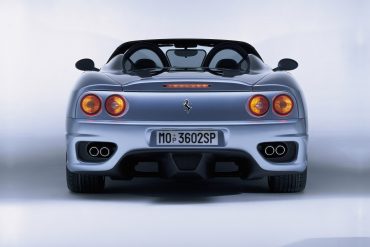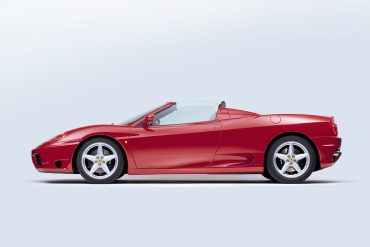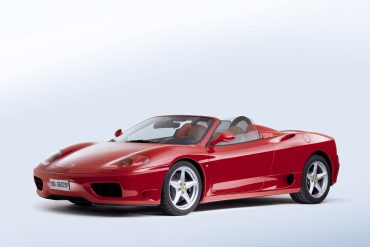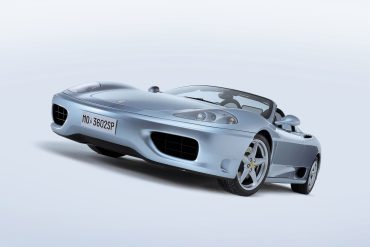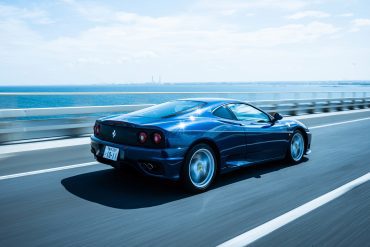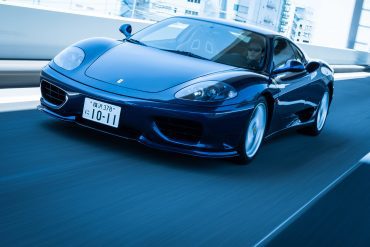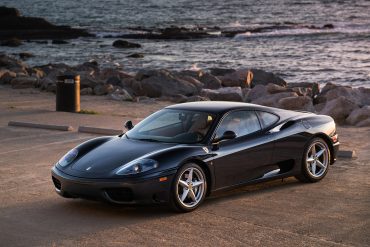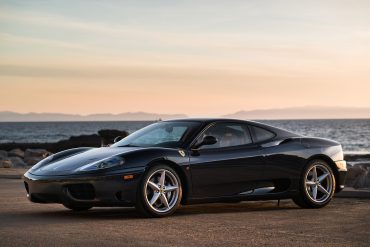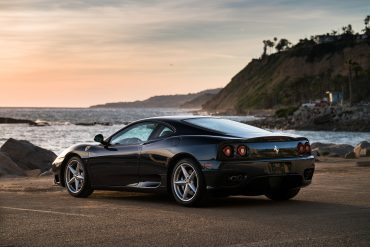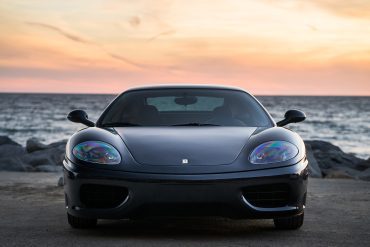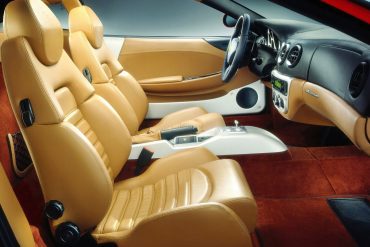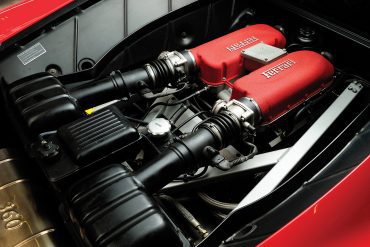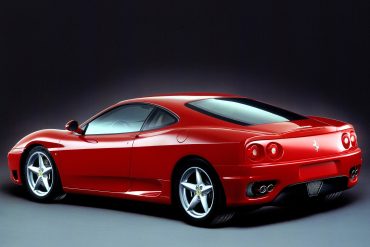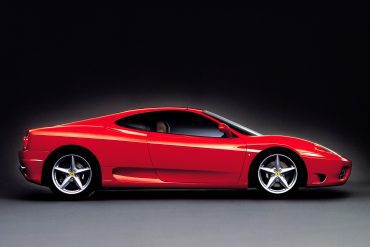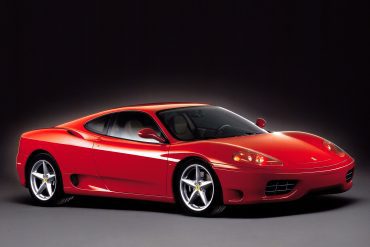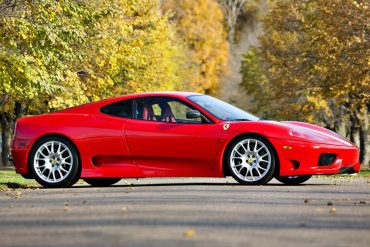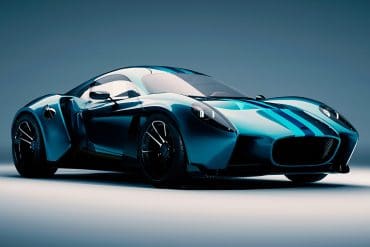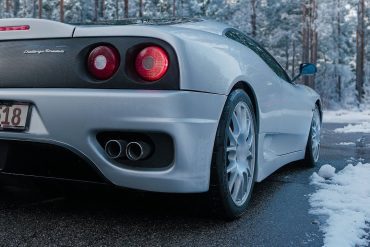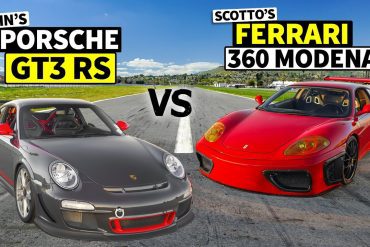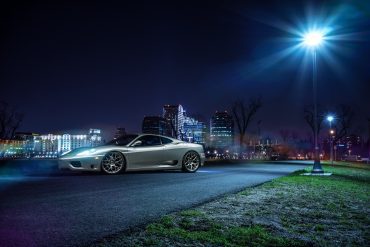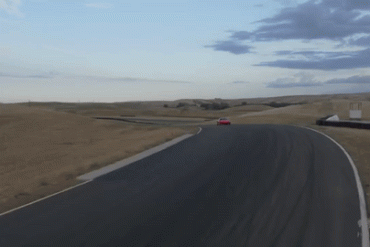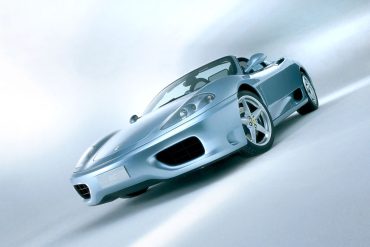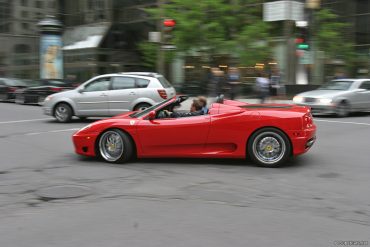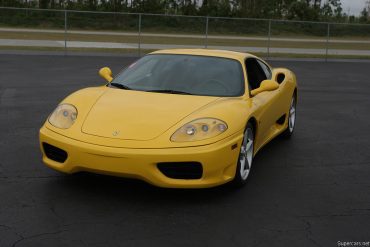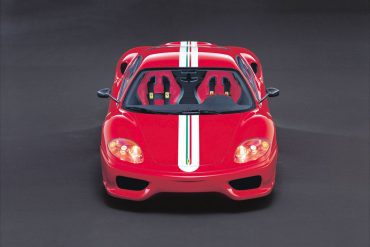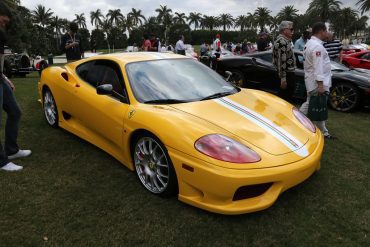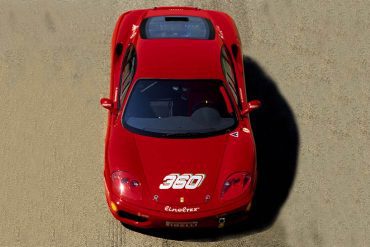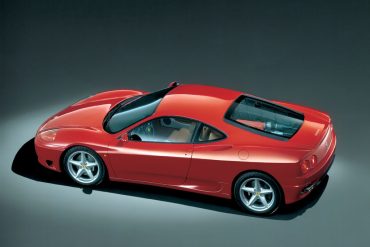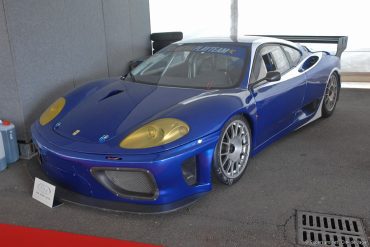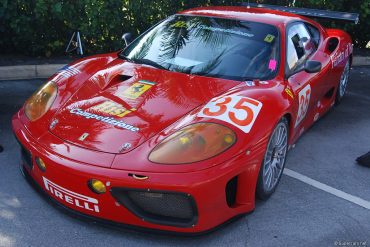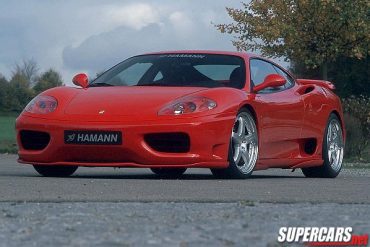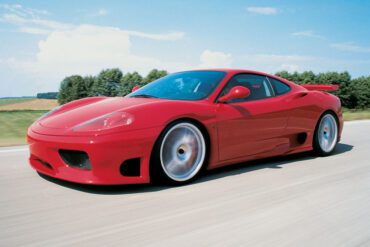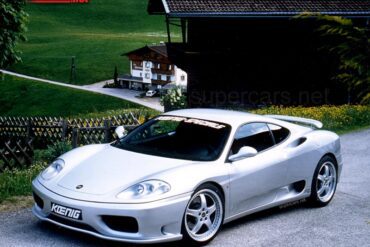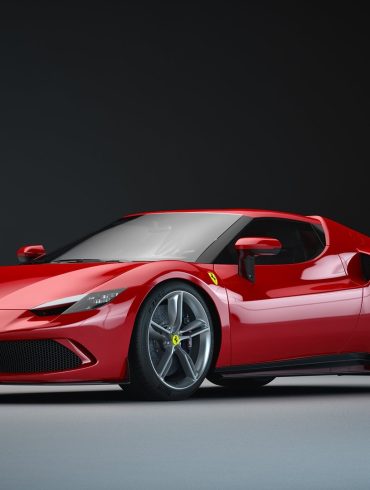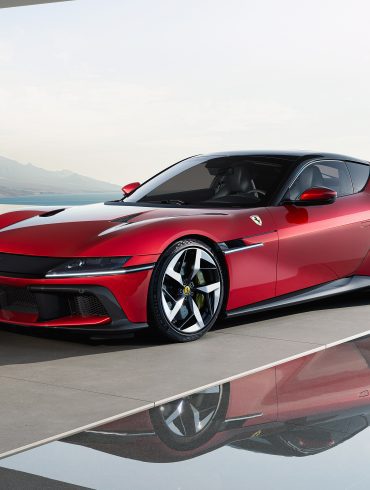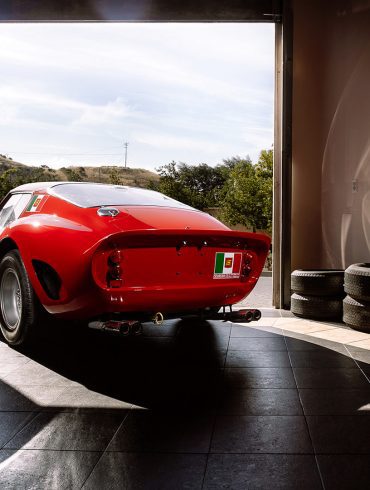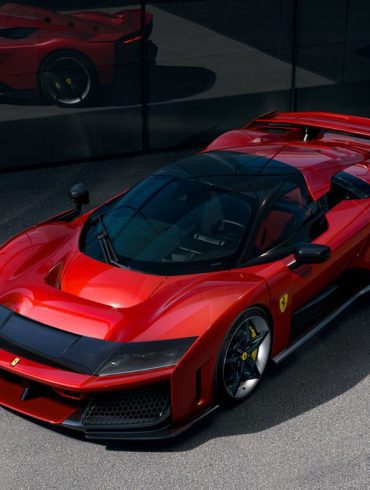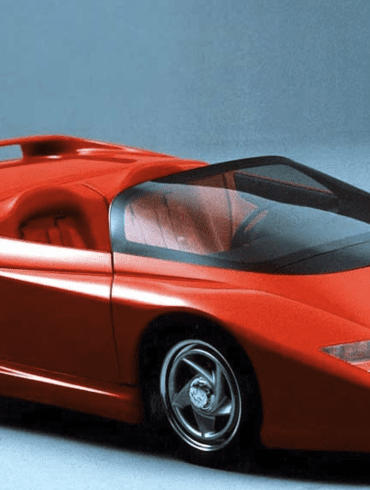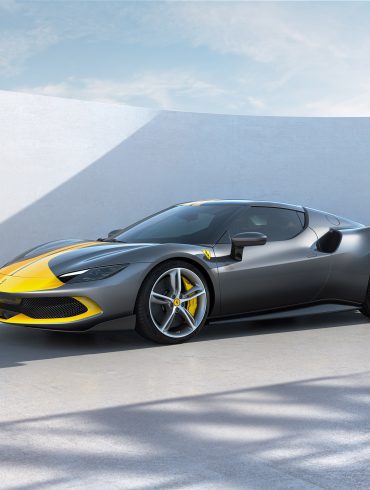Ferrari 360 Modena As Ferrari’s entry level product, the 360 offered many technologies which made it a superior car to the F355 series it replaced. Highlighting the car was an all aluminum chassis which included many complex castings versus the aluminum sheet and tube chassis coming from England. The result...
Ferrari 360
The Ultimate Guide
The Ferrari 360 was a modern Ferrari in every sense. When it debuted in 1999, it was the first Ferrari to have an aluminum chassis. It also had multi-mode traction control, as well as a fully-independent electronically-adjustable suspension. It had an epic naturally aspirated V8 that revved to 8,700 rpm and was good for a 0 - 60 mph sprint in just 4.3 seconds. It was also the last Ferrari to come with a 6-speed manual gearbox. The 360 was produced from 1999-2005. In 2000, Ferrari introduced the convertible, aka the 360 Spyder. Then, in 2003, the 360 Challenge Stradale debuted.
Overview / Variants / Models In-Depth / Buyer's Guide / Images / More Updates
Ferrari 360 - Inspired by Formula 1 Technology
The Ferrari 360, produced from 1999 to 2005, marked a pivotal moment in Ferrari’s history. Designed as the successor to the F355, the 360 combined cutting-edge technology with Ferrari’s signature styling, delivering both reliability and performance.
Known for its aluminum construction, improved aerodynamics, and a design that turned heads worldwide, the 360 would become one of Ferrari’s most successful models. In this article, we’ll explore the history, variants, legacy, and performance of the Ferrari 360, including how it was perceived by critics and enthusiasts at the time.
A New Era in Engineering
The Ferrari 360 was a bold leap forward in Ferrari’s V8 lineup, blending innovation with traditional Ferrari values. The design and engineering were headed by Pininfarina, Ferrari’s long-time design partner, in collaboration with Ferrari’s engineering team, who sought to address some of the limitations of the F355.
One of the most groundbreaking aspects of the 360 was its all-aluminum space-frame chassis, which was 40% stiffer and 28% lighter than the steel frame of its predecessor. This focus on weight reduction and rigidity allowed the 360 to handle better while providing improved safety. Paired with its mid-mounted 3.6-liter V8 engine, the Ferrari 360 quickly established itself as a car that could perform on both road and track.
The Ferrari 360 was available in several versions over its production run:
360 Modena: The initial coupe version named after Ferrari’s hometown, Maranello.
360 Spider: A convertible model introduced in 2000, which quickly became popular for its open-top experience.
360 Challenge Stradale: A track-focused variant introduced in 2003, with a lighter, more aggressive setup and a direct connection to Ferrari’s racing heritage.
360 Challenge: A race-only version used in Ferrari’s one-make racing series, known as the Ferrari Challenge.
Beauty Meets Functionality
The Ferrari 360’s design was a collaboration between Pininfarina and Ferrari’s engineering team, focusing on both aesthetic appeal and aerodynamic efficiency. Pininfarina achieved a design that not only looked stunning but also enhanced performance through careful attention to airflow.
Aerodynamics: The 360 was the first Ferrari road car to use an entirely flat underbody, coupled with rear diffusers to improve downforce. The 360’s design allowed for greater stability at high speeds, without the need for an oversized rear wing.
Aluminum Construction: The 360’s aluminum body and frame were revolutionary for Ferrari, reducing the car’s overall weight while improving torsional rigidity. This approach allowed Ferrari to deliver a car that was as durable as it was lightweight.
Cabin and Interior: The interior of the 360 was more spacious than its predecessors, offering comfort without sacrificing the driver-focused cockpit. The dashboard featured large, round gauges, and the center console housed Ferrari’s iconic gated shifter or, in the case of the F1 transmission, paddle shifters.
The 360’s blend of design and innovation was universally praised, with Car and Driver calling it "a stunning piece of automotive art" and noting that "Ferrari has achieved a balance between beauty and performance in a way only they can."
Ferrari’s Evolving V8
The Ferrari 360 was powered by a naturally aspirated 3.6-liter V8 engine that produced 400 horsepower at 8,500 rpm and 275 lb-ft of torque. It was paired with either a 6-speed gated manual transmission or an optional F1-style automated manual transmission, making it one of the earliest Ferraris available with paddle shifters.
Acceleration and Speed: The 360 Modena could accelerate from 0 to 60 mph in around 4.5 seconds, with a top speed of 183 mph. The car’s lightweight construction and powerful V8 made it a strong performer, and its performance was competitive with other supercars of the era.
Handling and Ride Quality: With its all-aluminum chassis, the 360 offered superior handling and a more comfortable ride compared to the F355. Ferrari’s engineers refined the suspension, providing a balance of agility and comfort that allowed the 360 to handle daily driving as well as spirited runs on twisty roads.
Track-Focused Challenge Stradale: The 360 Challenge Stradale featured an enhanced engine, reduced weight, and a race-tuned suspension. It was fitted with carbon-ceramic brakes for improved stopping power, and its power-to-weight ratio gave it an edge on the track. In a review, Autocar described the Challenge Stradale as "an almost telepathic machine" and "one of the best Ferraris to drive, with feedback so precise you feel at one with the car."
Modena, Spider, and Challenge Stradale
Each variant of the Ferrari 360 offered a unique driving experience, catering to different preferences among Ferrari enthusiasts.
Ferrari 360 Modena: The base model coupe was named after Ferrari’s hometown and was praised for its mix of performance, comfort, and classic Ferrari style. The Modena was an excellent all-rounder, offering a balanced experience that made it suitable for both road and track use.
Ferrari 360 Spider: The Spider version, introduced in 2000, offered an open-top driving experience. Thanks to its rigid aluminum chassis, the Spider delivered nearly the same handling characteristics as the coupe. With the addition of Ferrari’s convertible top mechanism, which opened and closed in under 20 seconds, the Spider became one of Ferrari’s most popular models of the early 2000s.
Ferrari 360 Challenge Stradale: Inspired by Ferrari’s racing heritage, the Challenge Stradale was lighter, louder, and more track-focused. Its reduced weight, carbon-ceramic brakes, and revised suspension system made it the ultimate performance version of the 360. Enthusiasts appreciate the raw, visceral experience the Challenge Stradale offers, and it’s now highly sought after by collectors.
Critical Acclaim
Upon its release, the Ferrari 360 received widespread acclaim from automotive journalists and enthusiasts. Reviewers praised the 360 for its modern engineering, comfortable interior, and balanced performance.
Road & Track called the Ferrari 360 "one of the most accessible Ferraris ever made" and noted that "it is a joy to drive at any speed." This accessibility, combined with its modern reliability, made the 360 a more practical supercar, appealing to a broader range of drivers than previous models.
Evo Magazine was particularly impressed by the 360 Challenge Stradale, stating that it "captured the essence of Ferrari’s racing spirit" and describing it as "pure, unfiltered, and thrilling." The Challenge Stradale became a favorite among hardcore driving enthusiasts, praised for its track-ready performance and visceral driving experience.
The Modern Classic
The Ferrari 360 set a new standard for Ferrari’s V8 lineup, paving the way for future models like the F430 and 458 Italia. With its blend of traditional Ferrari elements and modern engineering, the 360 has become one of the brand’s most beloved models. It was Ferrari’s first true “modern” V8, offering improved reliability, more comfort, and reduced maintenance needs.
The 360’s aluminum construction and aerodynamic improvements established a foundation for Ferrari’s future designs, and it remains a popular choice for both new and experienced Ferrari enthusiasts. Today, the 360 is considered a modern classic, embodying Ferrari’s evolution into the 21st century while maintaining the brand’s legendary performance and design.
Desirability and Investment Potential
The Ferrari 360 is increasingly recognized as a collectible, with certain variants in high demand.
Manual Transmission Models: The gated 6-speed manual transmission is particularly desirable among enthusiasts and collectors, who value its analog driving experience. Manual 360s typically command a premium over F1 models.
Challenge Stradale: The Challenge Stradale, as a limited and track-focused variant, is already highly sought after and expected to appreciate further. Its racing heritage, rarity, and raw performance make it a favorite among collectors.
Future Appreciation: As a model that bridges the gap between classic and modern Ferraris, the 360 is likely to continue rising in value. Its reliability and relatively lower maintenance costs compared to earlier models add to its appeal as a practical yet iconic Ferrari.
The Ferrari 360’s Enduring Appeal
The Ferrari 360 remains a landmark model in Ferrari’s history, combining beauty, performance, and innovation. With its groundbreaking aluminum construction, refined V8 engine, and options like the Challenge Stradale, the 360 offers something for every Ferrari enthusiast. Whether you’re drawn to the timeless design, the visceral driving experience, or the collectibility of its limited editions, the Ferrari 360 is a model that has earned its place in the pantheon of great Ferraris.
Today, the 360 represents an excellent entry point into Ferrari ownership, providing a unique blend of classic Ferrari charm with modern reliability and usability. As interest in analog Ferraris grows, the 360 stands out as a modern classic that’s destined to remain a cherished part of Ferrari’s legacy.
Ferrari 360 Specs
Manufacturer: Ferrari
Production: 1999–2004
Model years: 2000–2005
Assembly: Maranello, Italy
Designer: Goran Popović
Body style: 2-door berlinetta, 2-door spider
Layout: Longitudinal, Rear mid-engine, RWD
Engine: 3.6 L (3,586 cc) Tipo F131 V8
Transmission: 6-speed manual, 6-speed 'F1' Graziano auto-manual
Wheelbase: 2,600 mm (102.4 in)
Length: 4,477 mm (176.3 in)
Width: 1,922 mm (75.7 in)
Height: 1,214 mm (47.8 in)
Curb weight: 1,493 kg (3,291 lb) (Modena), 1,553 kg (3,424 lb) (Spider), 1,430 kg (3,152 lb) (Challenge Stradale)
Predecessor: Ferrari F355
Successor: Ferrari F430
Did You Know?
The 360 Modena was the first production Ferrari to feature an all-aluminum chassis and body. This innovative approach significantly reduced weight and improved rigidity compared to its predecessor, the F355.
The hardcore 360 Challenge Stradale was a stripped-down, track-focused version that shed weight and gained performance enhancements. It was a true driver's car that appealed to purists.
The 360 marked the end of an era for Ferrari, as it was one of the last models to offer a gated manual shifter. This classic feature has since made a comeback in some modern Ferraris.
Ferrari 360 Variants
There were several variants of the Ferrari 360 over the years. We outline the key data on each below.
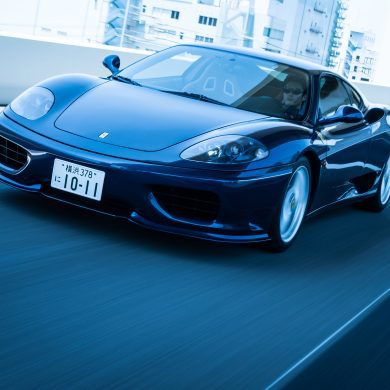
Ferrari 360 Modena
Type: Production Car
Years: 1999 - 2005
Production: 8,800 units
Engine: 3.6 L Nat Asp V8
Power: 395 bhp @ 8500 rpm
Torque: 275 lb/ft @ 4750 rpm
0-60 mph: 4.3 seconds
Top Speed: 189 mph
As Ferrari’s entry level product, the 360 offered many technologies which made it a superior car to the F355 series it replaced. Highlighting the car was an all aluminum chassis which included many complex castings versus the aluminum sheet and tube chassis coming from England. The result of using aluminum for the frame made the 360 Modena’s chassis about 25 percent lighter than the F355’s. Learn more
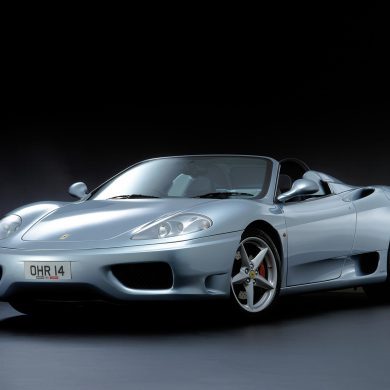
Ferrari 360 Spider
Type: Production Car
Years: 2001 - 2005
Production: 7,565 units
Engine: 3.6 L Nat Asp V8
Power: 395 bhp @ 8500 rpm
Torque: 275 lb/ft @ 4750 rpm
0-60 mph: 4.5 seconds
Top Speed: 180 mph
The 360 was designed with a Spider variant in mind; since removing the roof of a coupe reduces the torsional rigidity, the 360 was built for strength in other areas. Ferrari designers strengthened the sills, stiffened the front of the floorpan and redesigned the windscreen frame. The rear bulkhead had to be stiffened to cut out engine noise from the cabin. Passenger safety included strengthened windscreen frame and roll bars. Learn more
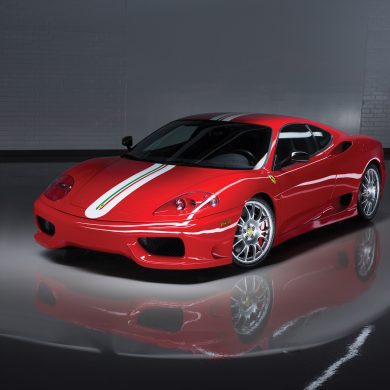
Ferrari Challenge Stradale
Type: Special Edition
Years: 2003 - 2004
Production: 1,288 units
Engine: 3.6 L Nat Asp V8
Power: 420 bhp @ 8500 rpm
Torque: 275 lb/ft @ 4750 rpm
0-60 mph: 3.8 seconds
Top Speed: 186 mph
Compared with a regular 360 Modena, weight was reduced significantly and the engine was tweaked. Its bare-bones approach and subtle styling changes only hint at the thoroughbred under the skin: this is a road-legal car that is entirely race-ready. It offered genuine race car performance and features in an accessible, street-legal package that is built on top of a production model. Today, it is on our our short list. Learn more
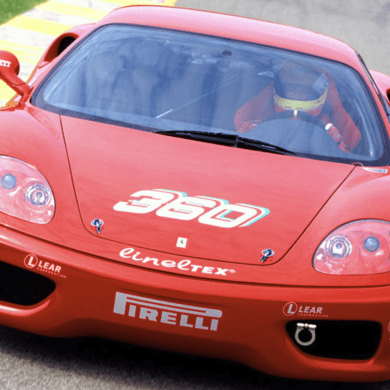
Ferrari 360 Modena Challenge
Type: Race Car
Years: 2000
Production: N/A
Engine: 3.6 L Nat Asp V8
Power: 400 bhp @ 8500 rpm
Torque: 275 lb/ft @ 4200 rpm
0-60 mph: 4.0 seconds
Top Speed: 180 mph
The Ferrari Challenge one-make racing series was created to get owners of its road-going GT cars back on the track. The 2000 season saw the debut of the 400-bhp, V8-engined 360 Modena Challenge alongside the F355. The 360 Modena maintains the same output as the standard road car, but incorporates mods which improve track performance. Learn more.
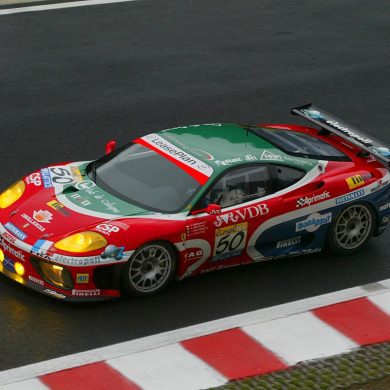
Ferrari 360 Modena GT
Type: Race Car
Years: 2002
Production: N/A
Engine: 3.6 L Nat Asp V8
Power: 430 bhp @ 8500 rpm
Torque: 300 lb/ft @ 5000 rpm
0-60 mph: 4.0 seconds
Top Speed: 180 mph
The introduction of the 360 GT came with Ferrari of Washington, who have campaigned one of the first GTs arriving through official threads. It was chassis #005M, number 33, which they raced in the 2002 Rolex Grand-Am Championship. At the first series race, the 24 hours of Daytona, Ferrari of Washington placed 14th in class behind a slew of Porsche GT3s. Learn more.
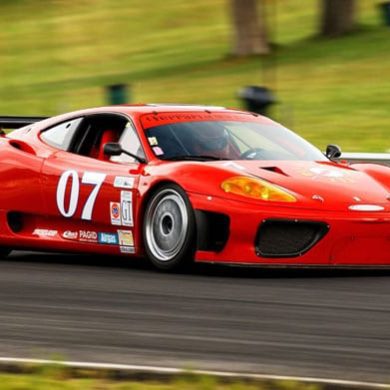
Ferrari 360 N-GT/ Michelotto
Type: Race Car
Years: 2002
Production: N/A
Engine: 3.6 L Nat Asp V8
Power: 540 bhp @ 8,750 rpm
Torque: 300 lb/ft @ 5000 rpm
0-60 mph: 3 seconds
Top Speed: 190 mph
The Ferrari 360 N-GT was a 360 Challenge race car tuned by Michelotto for the N-GT category of the FIA GT Championship. It was the fastest version of the Ferrari 360 with the engine generating a power output of over 540 hp when derestricted. The 360 N-GT was capable of a top speed of around 190 mph with a 0– 60 mph acceleration time of around 3 seconds.
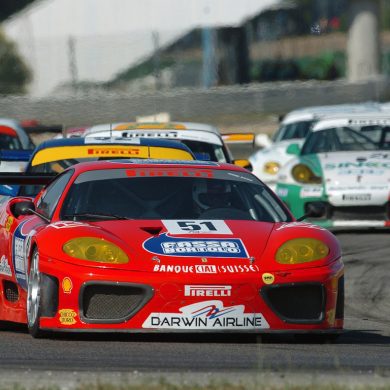
Ferrari 360 Modena GTC
Type: Race Car
Years: 2004
Production: 1,090 units
Engine: 3.6 L Nat Asp V8
Power: 445 bhp @ 8750 rpm
Torque: 302 lb/ft @ 6500 rpm
0-60 mph: N/A
Top Speed: 190 mph
Ferrari introduced a race version of the Challenge Stradale to counter the threat posed by Porsche’s new 996GT3 RSR in GT racing. The new model, to be called the 360GTC, receives a similar acronym to its recently introduced big sister, the 575GTC. The GTC version incorporated a number of modifications introduced during the 2003 season
"The F360 Modena is a revelation. It's a quantum leap forward from its predecessor, offering stunning performance, agile handling, and a truly modern design."
Car and Driver (at the time of launch)
Ferrari 360 Buyer's Guide
Buying Tips & Things to Look for When Buying A Used Ferrari 360
Here’s a buyer’s guide for the Ferrari 360, covering essential considerations, potential maintenance issues, and insights on its desirability and investment potential.
Engine and Timing Belt Health
The Ferrari 360’s 3.6-liter V8 engine delivers robust performance and is generally more reliable than some previous Ferrari engines. However, it does require careful maintenance:
Timing Belt: Unlike the later Ferrari models with timing chains, the 360 still relies on a timing belt that should be replaced every 3-5 years. The job doesn’t require engine removal, making it less costly than earlier models, but it remains a crucial service point. Look for a recent timing belt service documented in the service history.
Cam Variators: Early 360 models had issues with cam variators, which control valve timing. Ferrari issued a recall for faulty variators, so confirm that this recall was completed, or ensure that a replacement has been documented if applicable.
Oil Leaks: Inspect for any oil leaks around the valve covers, cam seals, and engine block. Oil leaks can lead to more serious issues if left unattended, so a leak-free engine is ideal.
2. Transmission and Clutch Condition
The Ferrari 360 came with either a gated 6-speed manual transmission or an F1-style automated manual transmission. Each has specific points to consider:
F1 Transmission: The F1 system can be rewarding to drive but is known for potential issues with the hydraulic system and clutch wear. Shifts should be smooth and prompt without hesitation. Ask for documentation showing recent F1 clutch and hydraulic pump servicing.
Manual Transmission: The gated manual version is particularly desirable, but you should still inspect for clutch wear and smooth gear engagement. Any resistance or difficulty shifting could indicate synchro or clutch issues.
Clutch Life: Clutch wear is a known issue in both F1 and manual models, especially if the car was driven aggressively. Ask for records of clutch replacement or check for slipping during test drives.
3. Suspension and Handling Components
The Ferrari 360 has an advanced suspension system that provides excellent handling but requires regular attention:
Ball Joints: Ball joints are prone to wear, especially on cars that have been driven hard. Look for any clunking sounds during a test drive, which could indicate worn ball joints or bushings.
Suspension Bushings: Inspect the suspension bushings for wear or cracking. Worn bushings can cause alignment issues and affect handling precision.
Shock Absorbers: The shocks on the 360 can leak over time, affecting ride quality and handling. Look for signs of oil around the shock absorbers, as replacements can be costly.
4. Braking System
The Ferrari 360 is equipped with high-performance brakes that provide strong stopping power but are costly to maintain:
Brake Discs and Pads: Inspect the brake discs for any signs of excessive wear or cracks. Brake pads should have adequate life remaining, and the braking response should be strong and smooth.
ABS System: The 360’s ABS system should function seamlessly, so look for any warning lights on the dashboard. Issues with the ABS may require expensive diagnostics and repairs.
5. Cooling System and Radiators
Cooling is essential to maintaining the 360’s engine health, especially in warm climates or during spirited driving:
Radiators: The 360’s radiators are susceptible to clogging or damage from road debris, especially at the front. Inspect for any damage, leaks, or debris buildup.
Cooling Fans: Check that both cooling fans engage properly when the engine temperature rises. If the fans aren’t working as they should, it could lead to overheating issues.
Coolant Condition: Confirm that the coolant has been changed regularly. Old or dirty coolant can cause corrosion and impact the cooling system’s efficiency.
6. Electrical System and Interior Components
The Ferrari 360’s electrical system includes numerous components that need periodic inspection:
Sticky Interior Plastics: Like many Ferraris of this era, the 360 suffers from interior plastics that can become “sticky” over time. This is purely cosmetic, but it can detract from the car’s appearance and may require refinishing.
Power Windows and Locks: Check that all electrical components, such as power windows, locks, and mirrors, function properly. Power window motors in particular can wear out over time.
Instrument Cluster: Ensure that the instrument cluster and all warning lights function correctly. Issues with gauges or intermittent lights may require electrical troubleshooting.
7. Body and Frame Condition
The Ferrari 360’s body is constructed primarily of aluminum, which is more resistant to rust but still vulnerable to damage:
Panel Fitment: Inspect the fitment of body panels, as any misalignment could indicate past repairs. Ideally, panel gaps should be even and consistent, with no signs of repainting or filler.
Underbody Scrapes: Due to its low ride height, the 360’s underbody may show signs of scraping, especially near the front bumper. Light wear is common, but deep scrapes or dents may need further inspection.
Convertible Top (360 Spider): If you’re considering a 360 Spider, check that the convertible top operates smoothly and that the fabric is in good condition. Repairing or replacing the top mechanism can be expensive.
8. Exhaust System and Emissions
The Ferrari 360’s exhaust system not only affects performance but also plays a big role in its sound and emissions:
Exhaust Manifolds: The 360’s exhaust manifolds are prone to cracking, which can cause performance issues and produce a rattling sound. Aftermarket exhaust upgrades are common, but original parts are ideal for investment purposes.
Catalytic Converters: Catalytic converters can degrade over time, affecting emissions and performance. Rattling sounds can indicate failing catalytic converters, which may need replacing.
Exhaust Bypass Valve: The exhaust bypass valve should open at higher RPMs, creating the distinctive Ferrari exhaust note. If this valve is not functioning, it may affect performance and sound quality.
9. Desirability and Future Investment Potential
The Ferrari 360 is a popular model due to its reliable engine, distinctive styling, and accessible entry into Ferrari ownership. It holds good potential as a future classic, especially for specific variants and well-maintained examples.
Rising Popularity of Analog Ferraris: The Ferrari 360 occupies a sweet spot as a relatively analog Ferrari with modern driving dynamics. As collectors increasingly seek out pre-electronic Ferraris, the 360’s appeal is likely to grow.
Gated Manual Transmission Desirability: The 360 with a gated manual transmission is particularly sought after by collectors and enthusiasts due to its engaging driving experience. Manual 360s generally command a premium over F1 models, and their value is expected to appreciate faster.
Future Investment Potential: Values for the Ferrari 360 have been steady, and as it becomes recognized as a modern classic, it’s poised for future appreciation. Well-maintained, low-mileage, and original examples are expected to hold the most value.
Special Editions and Variants: Limited-edition models like the 360 Challenge Stradale, a track-focused version with reduced weight and improved performance, are already in high demand and offer strong investment potential. The Challenge Stradale’s rarity and performance enhancements make it especially desirable for collectors.
10. Cost of Ownership and Maintenance
While the Ferrari 360 is generally more reliable than its predecessors, ownership costs can still be significant:
Regular Maintenance: Routine servicing by Ferrari-certified specialists is essential. Timing belt changes, oil and coolant changes, and clutch replacements are necessary to maintain the car’s value and performance.
Storage and Insurance: A climate-controlled storage environment is recommended to prevent electrical issues and preserve interior components. Insurance premiums for the 360 can vary, so plan for higher costs if using the car regularly.
Parts Availability: OEM parts for the Ferrari 360 are generally available but can be expensive. Budgeting for both regular wear-and-tear replacements and preventive maintenance will ensure the 360 remains in good condition.
Conclusion
The Ferrari 360 is a standout model that delivers an engaging, reliable, and rewarding driving experience. When looking for a 360, prioritize examples with full-service histories, a recent timing belt change, and minimal modifications. Manual transmission models, as well as the Challenge Stradale variant, hold particular investment potential and appeal among collectors. With proper care and maintenance, the Ferrari 360 can serve as both an exhilarating sports car and a valuable investment that is likely to appreciate over time, especially as demand for analog Ferraris grows in the collector market.
"The 360 Challenge Stradale is a raw and visceral driving machine. It's a stripped-out, hardcore version of the Modena that's focused on pure performance."
EVO magazine (at the time of launch)


